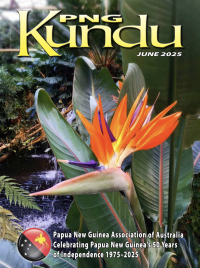4. Revolutionary rule to protect the right to silence
Paul Quinlivan’s Snapshots
The Queen against KABO, heard at Sohano on 29 February 1952, was my first nolle – that is, the first trial I aborted saying “this trial ceases here”. The Defending Officer, Bob Macilwain (who joined the Field Staff on 4 April 1939), objected to the admission of a confessional statement, taken from his client, on the grounds that, being taken by a Coroner, it infringed his client’s right to remain silent. Monte ordered an immediate voire dire (a “trial within a trial” by which a judge, in the absence of the jury, can hear evidence as to how a confession was obtained, so that he/she can make a “decision at law” as to whether it should be admitted or rejected). I am sure that judges in Australia would have held that the Coroner was right in taking the statement because, after all, that is what Coroners are there to do! Monte, however, said “No! This is a trust Territory and we are proud of our local traditions”. And, to my surprise (since people who served in New Guinea before the war usually ignored – or knew nothing about – what happened in Papua) he then cited a Territory of Papua paper by Judge Gore, published at pages 20-22 of the 1928/1929 Papua Annual Report, as authority for what he was describing as “local traditions”. Monte then said that, accepting that the primary function of a Coroner is to discover what went wrong in a special case so that society can protect itself against a repetition of what happened, the Investigator must decide whether the death or fire is of this special category or whether it is simply an ordinary case of homicide or arson. If it is an “ordinary criminal case” the procedures laid down for committal cases should be followed. He threw out the confession. Although the remaining evidence was substantial, it was doubtful whether I could obtain a conviction so I immediately entered a nolle prosequi, taking the case out of the judge’s hands, so that it would be re-investigated and begun again.
I circulated a report of the case and, from that day on (until local procedures were abandoned) there was never any suggestion that Coroners Powers were used to deny an Accused his right to remain silent. Even in the Telefomin Inquiries and Trials (which were forced to proceed by way of Coroner’s Inquest because, for reasons which have never been explained, the Public Hearings were called on months before anyone could expect the prosecution to be ready) there was never any attempt to put in, as evidence, anything the Accused had said to the investigators. In an early re-issue of the report I added, “It is interesting to note that at page 595 of 1955 Criminal Law Review there was a move, in England, to outlaw the use of Coroner’s Court for committal purposes.” I am nowadays unable to check this reference but, if it had succeeded, it would have brought English Law into line with TPNG!




